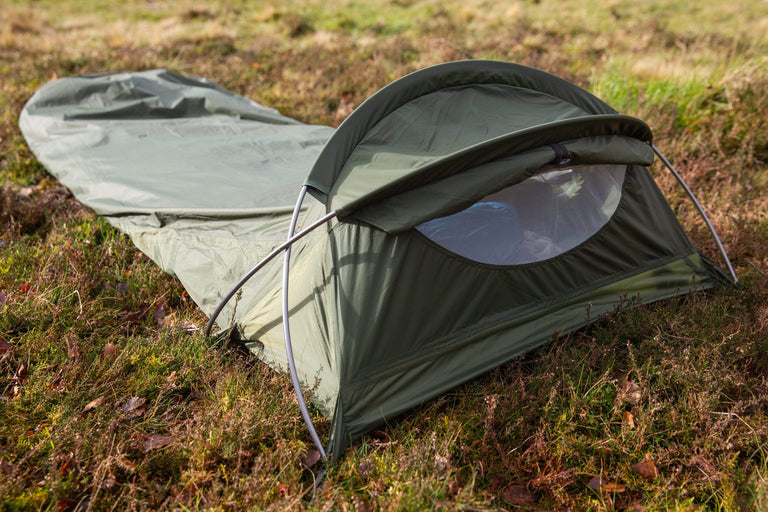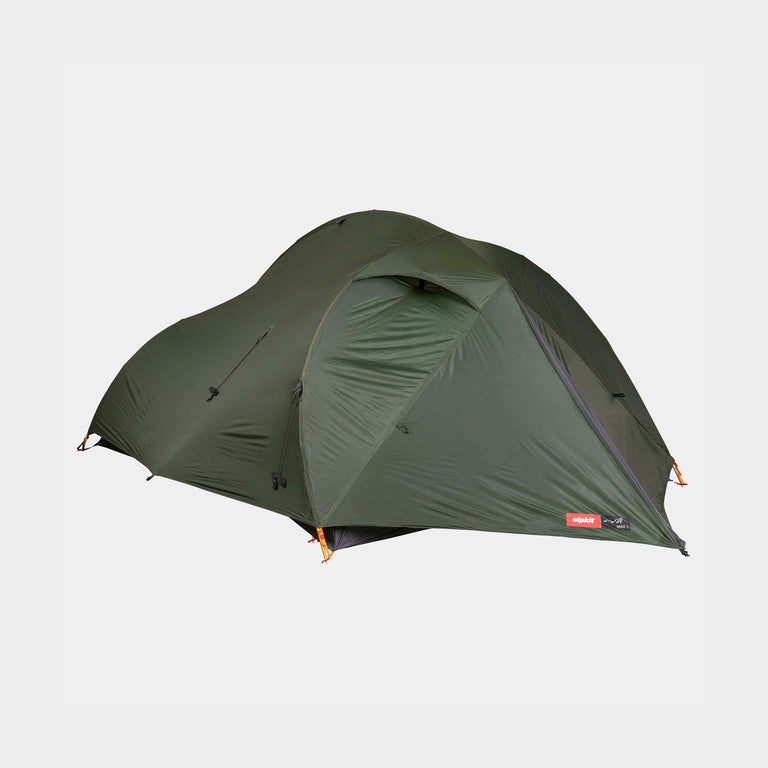Team Antarctica: The return, reflecting on a daring expedition.
The team (Jonathan Carrivick, Neil Glasser, Bethan Davies, and Alan Hill) were deployed into the field early on 21st January by the RRS Ernest Shackleton after a decidedly rough crossing. Getting into calmer seas once we were among the ice was greatly appreciated! We were deployed by the Tula (a landing craft with a small crane), and we could simply drive our quadbikes off the boat and onto the shore. The island had a light dusting of snow, and was strikingly beautiful.

ph. Bethan Davies.
It had been a little while since our ATV training course, and after a few false starts, I managed to reverse my bike and trailer and get off the boat and onto the shore. There, we sorted out what we needed immediately to sort out our camp. There was some initial consternation when we realised (once all the boat crew had left) that we had no food, but this was soon rectified!
Once we had repacked our trailers with the essentials, we drove to Monolith Lake, which we had decided would be a good camp. In fact it was excellent – sheltered, with a good source of water. We also had our own unfriendly skuas, who attacked us when we wondered too close to their nest. The pyramid tents proved rather tricky to erect, being a different model to those we had used in the Peak District, but we managed it eventually! By the time night fell, we had ferried more equipment to our camp, put up our 2 sleeping units, the radio mast, the mess tent, the toilet tent, unrolled our sleeping units (a wooden board, karrimat, thermarest, sheepskin rug, down sleeping bag and fleece liner – yes they were cosy!), and unpacked a few boxes. Very exciting discovering what was in the ‘Tent Box’ – all sorts of goodies!

ph.Bethan Davies.
So we were ready to begin work on 22nd Jan, and threw ourselves into fieldwork. The terrain proved difficult, and driving the quad bikes was a rapid learning experience. They can go up or down anything – they will keep going up, until they turn over. So one must be careful, as they are easy to roll. However, we rapidly gained confidence and were driving up and down and across all sorts of steep slopes, through snow patches and rivers, and over rough rocky ground. We went to the beach on the first day, and were distracted immediately by the bergy bits beached onshore.

ph. Bethan Davies.
But all was forgotten when we found our first granite boulder! These boulders were deposited on James Ross Island by the Antarctic Peninsula Ice Sheet during the Last Glacial Maximum, 18,000 years ago. By taking rock samples for cosmogenic nuclide dating, we can establish how long they have been exposed on the surface (an ‘exposure age’). This means that we can reconstruct the chronology of ice sheet retreat. Cosmogenic isotope dating works because we are constantly bombarded by cosmic particles from outer space. These particles collide and react with atoms in the quartz crystals in granite, forming radioactive isotopes. We can tell what the exposure age is by the amounts of different isotopes in these quartz crystals.

Alan, Red Island. ph. Bethan Davies.
So, in the field, this involves hitting the rock with a hammer and chisel until you have 1 kg of rock sample. This can take hours! At the same time, it is important to note the sediments and landscape around the boulder, so you can understand how it came to be there, and what it’s wider context is. A rock sample and age on its own is not enough. To this end, we took 72 cosmo samples, counted 5100 pebbles, noting lithology, shape, roundness and size, and mapped geomorphology and described surface textures all over the Ulu Peninsula on James Ross Island. We now have an excellent geomorphological and sedimentological map, which we can use to interpret the glacial history of the region. As we are also interested in the more recent glacial history of James Ross Island, we also took cosmo samples and mapped ice-cored moraines in the small cirque glaciers, so that we can look at downwasting over the past 100-200 years.

ph. Neil Glasser.
Living in a polar region for 50 days was a very special experience. Temperatures averaged around 0C, but the coldest temperature was -10C, the warmest +5C. The predominant wind was south-westerly, and we experienced mainly excellent weather with this. All the bad weather gets trapped on the western Antarctic Peninsula, and we bask in its rain shadow. However, sometimes the wind swung around to come from the south, bringing strong winds, snow, and cold weather. Often, we would still venture out if visibility was not too bad, but sometimes we would be confined to our tents for days! Scrabble and other games (Pass the Pigs!) were invaluable at these times.
Every day after a long day in the field, we would come back to camp and get changed into warm, dry clothes, leaving our damp ones hanging on clothes lines inside the tents. It was good to have so many pairs of socks – our Alpkit socks kept our feet warm! Our Alpkit down jackets came out every evening, and snuggled into them to cook and eat our evening meal. By around 9 pm, it was generally getting pretty cold, so we would retire to our sleeping bags to keep warm, and read, talk, or play games with our tent mate. On lie-up days the down jackets were an important piece of kit! Because the weather can change so quickly in Antarctica, we also always took them out with us into the field, to use in case of emergencies.

ph. Bethan Davies.
Although we weren’t expecting it, we saw some good wildlife while on James Ross Island. We were visited by some Adelie Penguins. I do not think that these curious birds had seen humans before, and were as interested in us as we were in them! We also spent some time with Weddell and Fur seals. Weddell seals do not move very fast at all on land, but furries are fast and can be aggressive, so we kept a wide birth. And of course, the skuas. They were also very curious, so we had to bury the GPS base station batteries etc, as they would always tug them out to see if they were edible!

Fur Seal, Cape Lachmann. ph. Bethan Davies.

Adelie Penguin. ph. Bethan Davies.
At first, in January, the days were very long and the sun did not set. However, by March, we were really beginning to feel that winter was approaching. The nights started to draw in, and by 8.30 pm we had to use our headtorches inside the tent. The tilley lamps were lit more frequently-not only do they provide light, but they also kick out a lot of heat! In March, the weather sharply deteriorated with several severe storms. Two of the tents were damaged beyond repair (but not our sturdy pyramid tents!). Getting uplifted by the RRS James Clark Ross was a relief, but getting there and striking camp in the snow proved very difficult. Quad bikes, especially when heavily laden and with trailers, perform badly in the snow, and we spent many hours digging them out. It took two days to strike camp and get uplifted due to the poor weather, but we made it!

ph. Neil Glasser.
for more information on the aims of this trip check out the first Daring Deed






















































